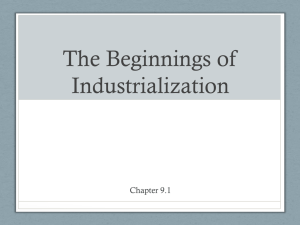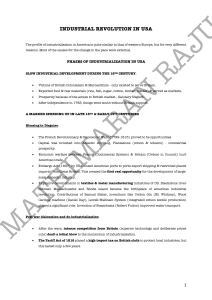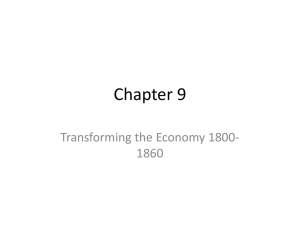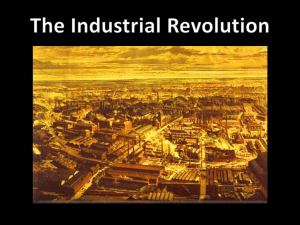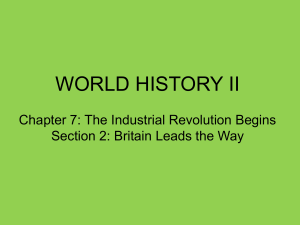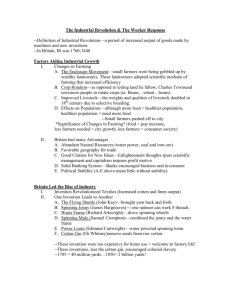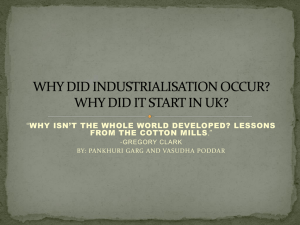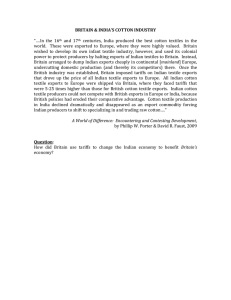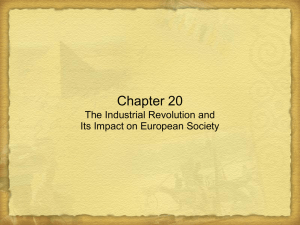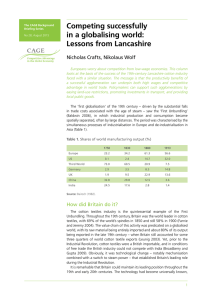Document
advertisement
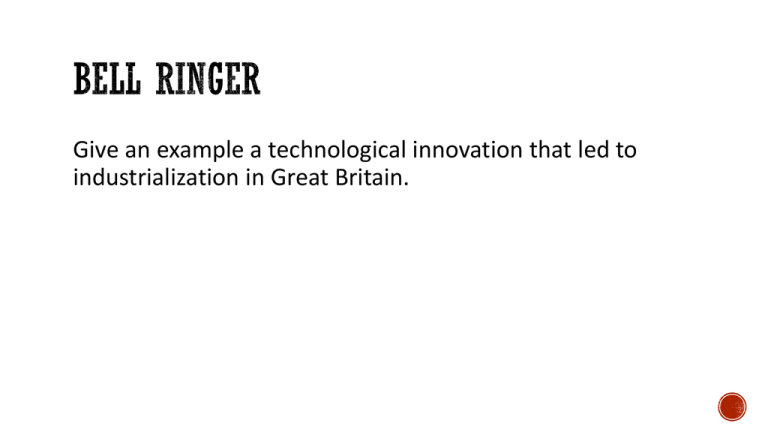
Give an example a technological innovation that led to industrialization in Great Britain. Britain Leads the Way. Britain had the advantage of plentiful NATURAL RESOURCES, such as natural ports and navigable rivers. Rivers supplied water power and allowed for the construction of CANALS. Canals increased accessibility for trade and were a key role in bringing goods to market. Britain was able to establish COMMUNICATIONS and TRANSPORT relatively cheaply due to its easy accessibility to sea from all points. Britain's plentiful supply of COAL was fundamental to its industrialization and was used to power steam engines. Vast supplies of iron were available to be used to build the new machines. The increase of population boosted the DEMAND for goods. Money was needed to start businesses to meet the demand of the new large population. The business class started to accumulate capital. CAPITAL - Money used to invest in enterprises. ENTERPRISE - A business organization in an area such as shipping, mining, railroads, or factories. Businessmen were ready to risk their capital in new ventures due to the healthy economy. ENTREPRENEURS - people who managed and assumed the financial risks of starting new businesses. British merchants tried to organize a cotton cloth industry at home. They developed THE PUTTING - OUT SYSTEM, which was also known as the cottage industry, in which RAW MATERIAL was distributed to peasant families, who spun it into thread and then wove it into cloth in their own homes. The demand for cotton grew. John Kay's flying shuttle enabled weavers to work so fast that they soon outpaced spinners (1733). Shown below. James Hargraves invented the Spinning Jenny in 1764, which spun many threads at the same time. Shown above. In 1769, Richard Arkwright patented the water frame, which was a spinning machine that could be powered by water. Shown below. Raw cotton grown in the South had to be cleaned of dirt and seeds by hand. Eli Whitney invented the COTTON GIN that separated the seeds from raw cotton at a fast rate Shown above. In the early 1800's, pioneers like George Stephenson developed steam-powered locomotives to pull carriages along iron rails Tracks could go places where rivers did not, allowing factory owners and merchants to ship goods swiftly and cheaply over land. The world's first major rail line, from Liverpool to Manchester, opened in England in 1830. http://www.history.com/topics/henry-ford/videos/history-of-the-holidays-the- story-of-labor-day Factory class activity You are to Trace Color Cut out Your trains individually You have 10 minutes. You and your team are to make an assembly line Some are to trace Some are to cut Some will color The same rules as round two, the assembly line, but you will have no lights and I will be walking around to take away arms and seats. Fill in the chart and answer the questions. How did this activity help you better understand the industrial revolution?
